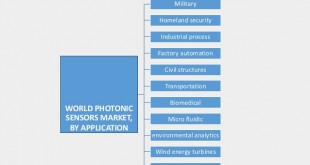In 2000, a Russian cruise-missile submarine — Kursk — sank, killing all 118 sailors on board. The Russian government concluded the ship sunk due to a faulty weld which caused a gas leak and led to an explosion.
The U.S. Navy in August 2018 said that there’s a problem with welds on missile tubes that are destined for new submarines. The welding issue was identified on missile tubes that have been delivered to General Dynamics Electric Boat for new ballistic-missile submarines for the U.S. Navy and the Royal Navy, and on tubes for weapons being manufactured for new U.S. attack submarines, according to the Naval Sea Systems Command.
BWX Technologies, Inc., a subcontractor to Electric Boat, found the quality control issue, the command said. A testing instrument did not adequately inspect the welds. The tubes have not been installed on any submarines. A dozen were affected. BWX Technologies said it recently suspended welding operations relative to an area of concern and the company takes quality very seriously. The Navy is working with the Electric Boat to determine the next steps, which could include further inspections and fixing or replacing welds.
William Couch, a spokesman for the Naval Sea Systems Command, said he wouldn’t know the cost to the programs or additional details until they finish the assessments. In 2015, three attack submarines were sidelined due to welding problems at a different defense contractor.
Construction on the U.S. Navy’s new ballistic-missile submarine program, the Columbia class, is expected to begin on schedule in fiscal 2021, Couch said. The Navy awarded a $5 billion contract to Electric Boat last year to finish designing the class.
U.S. Rep. Joe Courtney, a Connecticut Democrat whose district includes Electric Boat, said he’s very concerned because there’s so little margin for delays in the Columbia-class program and there have been weld problems with attack submarines before. Electric Boat said in a statement that it’s working to mitigate any potential impacts to the U.S. and U.K. programs.
BWX Technologies has a contract for 26 missile tubes for the ballistic-missile submarines and three weapons tubes for the attack submarines, which are in various stages of completion, according to the Navy. The company has been manufacturing missile tube assemblies for these submarines since late 2014.
The Navy and industry need tighter control over production quality within the supply chain, added Courtney, who was briefed by Electric Boat on the weld problem. “Welding is existential in submarines. You can’t have bad welds,” he said. “They operate in an environment that doesn’t sustain human life.”
The quality control issue will thereby not only impact the U.S. and U.K. SSBN programs, but might also impact the schedule for the U.S. Navy’s next iteration of the Virginia class, Virginia Block V, which incorporates additional vertical-launch missile cells, known as the Virginia Payload Module (VPM).
U.S. Navy Partnership Aims to Reduce Submarine Welding Inspection Costs
U.S. Navy Metalworking Center (NMC) and the Lawrence Livermore National Laboratory (LLNL) will be working together to develop a non-destructive method of inspecting welds on the submarines to find any potential defects. Hull inspections currently require the removal and reinstallation of the coating in order to examine the welds underneath. This process is costly and time-consuming.
“We’re investigating a cross-platform technique that allows us to interrogate the welds without doing destructive work on that treatment,” said LLNL Materials and Engineering Section Leader Karl Fisher, a principal investigator on the project. “[Submarine maintenance] is a major undertaking. A lot of things can happen and anything that impedes the schedule is bad. Our proposal is to reduce the cost, but it is a costly process.”
The new non-destructive testing method they’re investigating is based on a technology currently used to search for improvised explosive devices buried underground. It uses acoustical structural excitation along with ultra-wide-band radar technology. Fisher says the technology isn’t guaranteed to work on submarines, but it could help inspectors narrow the area where a crack or defect may have occurred in the welding.
Military vehicles like this use the proposed inspection technology to find buried explosives. “We would use acoustics and vibration excitation to get the hull moving, and then watch and listen for changes in motion,” Fisher said. “It’s analogous to a wineglass—if you tap it and the glass is solid, it will make a ‘ding.’ If there’s a crack in it, you’ll hear a dull thud. In theory, the defect will radiate differently and have a different mechanical response, and we could scan it and find out where.”
LLNL researchers will use samples of submarine hulls to test the inspection process at their labs. Two other institutions will also be investigating non-destructive testing methods using terahertz and phased array approaches. The Navy will review the results before the end of 2017, before making a decision on whether to move ahead with a prototype system.
“Each modality has its shortcomings; there’s no one technique that will address the problem,” said engineer and co-principal investigator John Chang. “To me it highlights the Lab’s uniqueness in multidisciplinary research and tapping into experts in their fields to generate new capabilities.”
The Navy estimates that reducing the amount of coating that has to be removed and reinstalled on a Virginia Class submarine during inspections could reduce costs by as much as $1.2 million per hull per inspection cycle, or $6 million over a five-year period.
References and resources also include:
http://weldingsource.org/u-s-navy-partnership-aims-to-reduce-submarine-welding-inspection-costs/
 International Defense Security & Technology Your trusted Source for News, Research and Analysis
International Defense Security & Technology Your trusted Source for News, Research and Analysis
